ASU's week in pictures
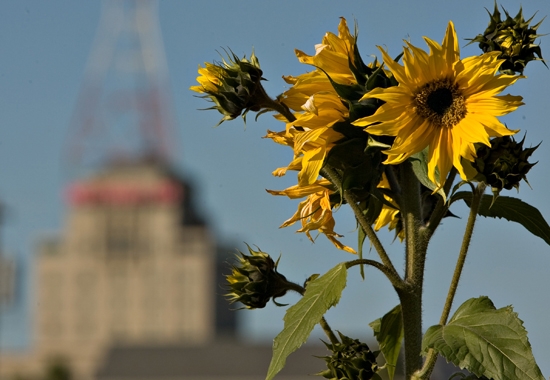
A fall crop of sunflowers brightens up downtown Phoenix as part of the Roosevelt Row Valley of the Sunflowers project. A vacant two-acre block was planted with sunflowers, which were harvested by community members and high school science students, Jan. 7. The harvested seeds will be pressed for oil and will be used to create biodiesel fuel. To watch a video about the project visit: http://asunews.asu.edu/20110922_video_KAET_Sunflowers.
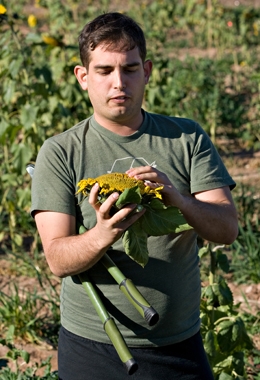
Braden Kay, a doctoral student in sustainability, discusses sunflowers during a briefing prior to the harvest. The Valley of the Sunflowers was inspired by an artist and initiated by key community partnerships with the Phoenix Union Bioscience High School, Intel and Roosevelt Row CDC.
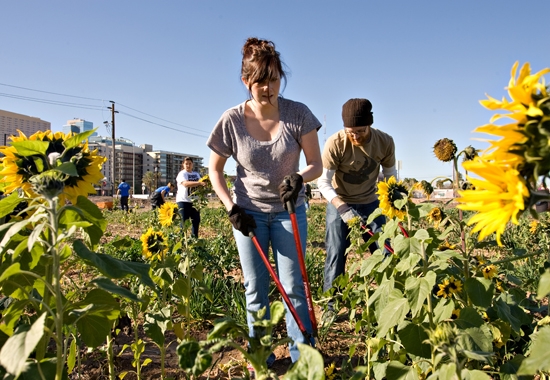
Lauren Loftus and ASU alum Adam Dustan showed up to help with the harvest. The Intel Foundation and Intel Corporation have provided funding for the first two seasons of this project. Generous donations by Hensel Phelps Construction Company, the ASU School of Sustainability, Sycamore Farms and Matt Moore, the University of Arizona, DPR Construction, the ASU Desert Initiative, Sunstate Equipment Rental, Mohammed Zerkoune of USDA, the City of Phoenix, APS and the work of volunteers continue to make the project possible.
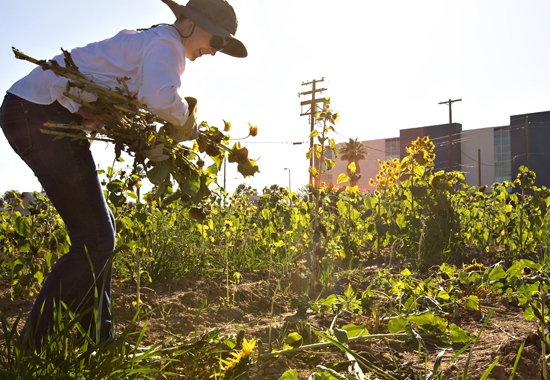
Intel engineer Katy Bosworth gathers the harvested sunflowers. The heads of the plants will be dried with the seeds going to make oil, the leaves will be composted and the stalks will be made into charcoal to be used as a soil amendment. For more information about the project visit: http://www.rooseveltrow.org/.
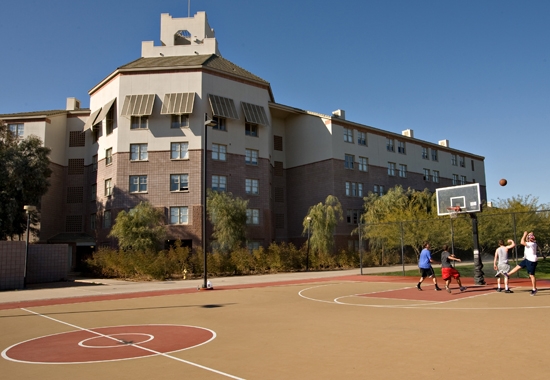
ASU students relax with a Sunday afternoon pickup basketball game at ASU’s Sonora Center.

The completed solar installation project at Lot 59 on the Tempe campus now provides about 800 covered parking spaces, as the spring 2012 semester begins. The solar array generates 2.1 megawatts of electricity. To learn more about the installation visit: http://asunews.asu.edu/20110802_NRG_ASU_PowerParasol.
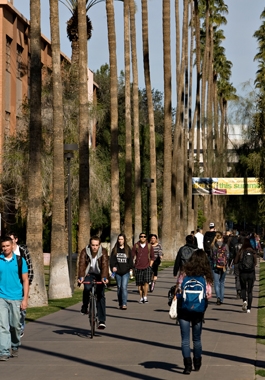
ASU’s campuses spring into action for the start of the new semester.

Mechanical engineering major Xavier Vargas finds an unusual homework spot, in the comfort of a tree on Hayden Lawn.
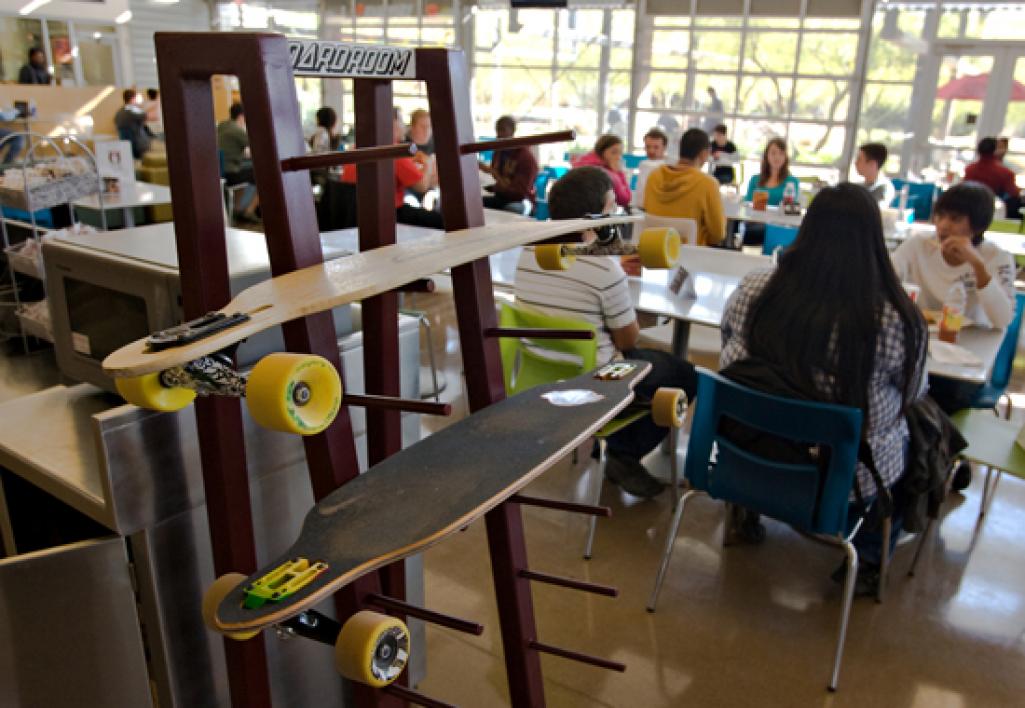
The addition of skateboard racks in Polytechnic Student Union provides a place for sporty students to stash their gear.
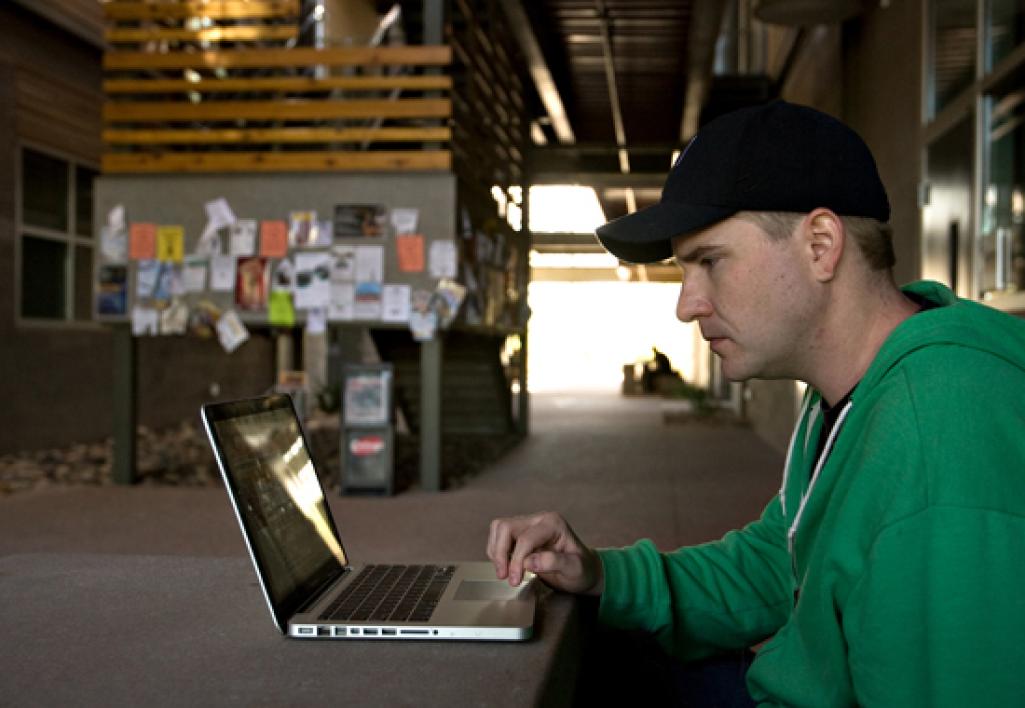
Alex Grimsman works on his laptop in the breezeway of San Tan Hall, on the Polytechnic campus, while waiting for his Introduction to Business class. Currently majoring in sociology, Grimsman is also considering other majors.
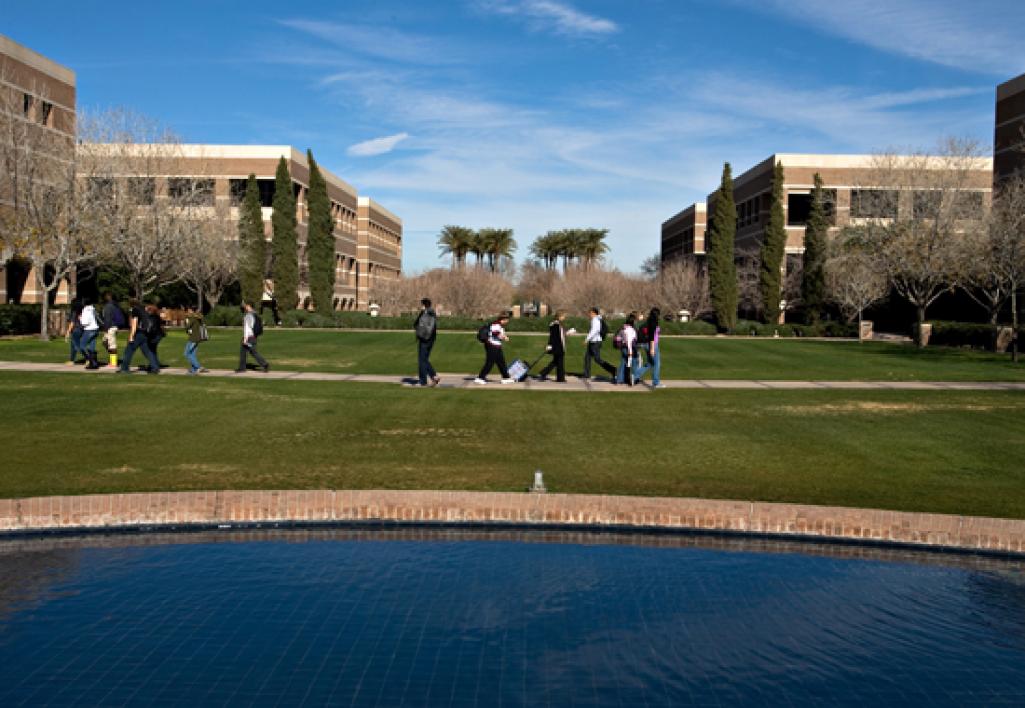
Students cross the walkway on Fletcher Lawn, as classes get underway at the West campus.

Jesenia Silva, a sophomore criminology and criminal justice major, tries her hand at the communal jigsaw puzzle in the University Center on the Downtown Phoenix campus while waiting for a class to begin.
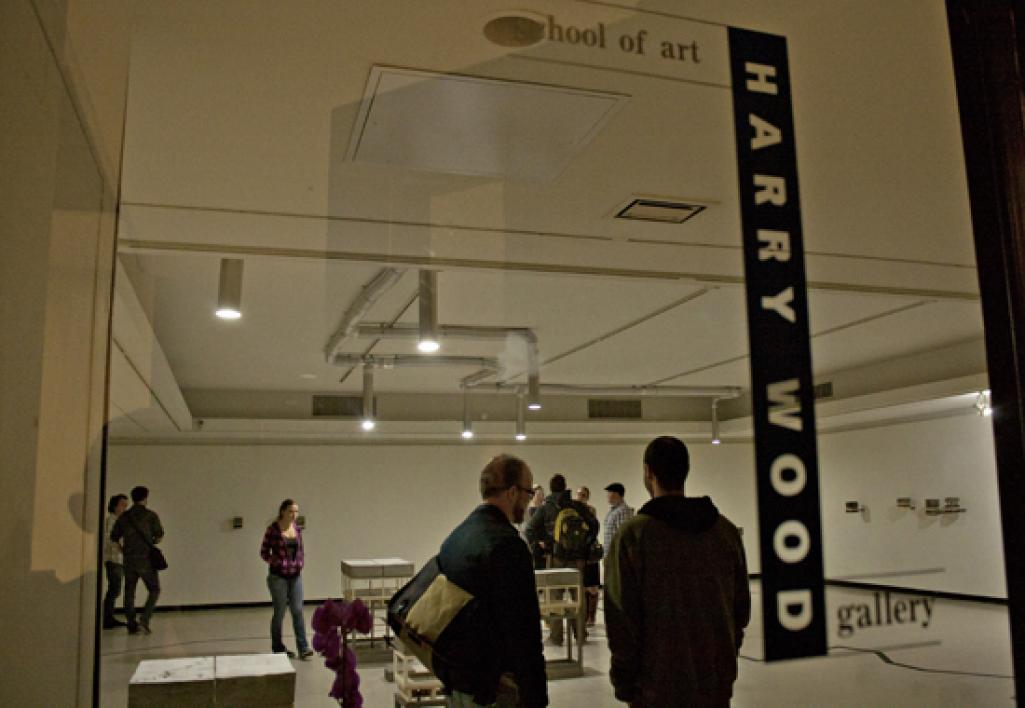
The School of Art kicked off the semester with its first exhibition opening at the Harry Wood Gallery. Located on the first floor of the School of Art Building and established in 1971, Harry Wood is one of four galleries on the ASU Tempe campus that will showcase student work in exhibitions throughout the semester. Each Tuesday night, the galleries open their doors to the community for opening receptions. For a complete list of upcoming events, visit http://herbergerinstitute.asu.edu/events/current.php.
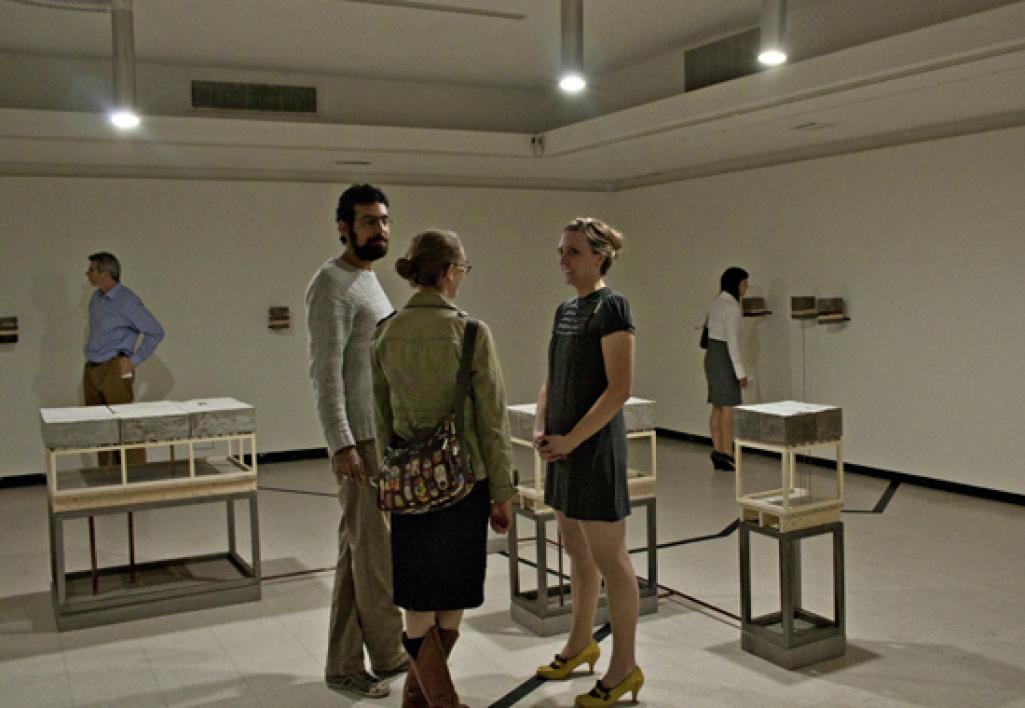
Emily Stergar (front right), talks with guests at the opening of her master’s of fine art thesis exhibition in sculpture. Titled: “DRAIN,” the exhibition initiates the question, “What happens one day if you turn on your water tap and nothing comes out?” Access to water is a key element in the growth of civilization. "All societies have been forced to either settle near or divert water for a better life," says Stergar. "As settlements grow they face water shortages forcing them to find new ways to access water."
The Central Arizona Project’s 336‐mile long diversion of the Colorado River provides a focal point for Stergar’s research as she gathers and presents the carefully manipulated transition of water. As it travels – from the river to the aqueduct, to fields and homes – water will finally find its way to the proverbial end of its use, the drain. Humankind’s displacement of water follows a system built on the manipulation of the environment, which is driven by the exponential need of a society’s growth. “DRAIN” probes the questions of where water comes from, who does it serve and what kind of end it will deliver?

